Overview
Credit cards come in all shapes and sizes. Well, I suppose that’s not right. They’re all the exact same size and shape. But you understand the meaning—they come in all different types of earning styles.
At the core of things, we can break them down into two categories: rewards cards and cash back cards. Both hold their own place in the credit sphere and benefit different users in different ways. But today, we’re going to focus on the best rewards cards.
To help get you started, we’ve listed some of the best rewards cards on the market at different price points.
The Bottom Line:
The greatest tool in a traveler’s wallet is a rewards card. While cold hard cash might seem the better option, rewards, particularly travel rewards, are flexible, making hugely outsized redemptions possible. While a cash back card might offer only $750 in straight value, the best rewards cards can stretch to $2,000 in the right hands.
The quick pick:
Best rewards credit cards of January 2025:
- Best for premium perks: The Platinum Card® from American Express
- Best for straightforward earning: Capital One Venture X Rewards Credit Card
- Best all-around card: Chase Sapphire Reserve®
- Best for eating out: American Express® Gold Card
- Best mid-tier card: Chase Sapphire Preferred® Card
- Best card for beginners: Capital One Venture Rewards Credit Card
- Best free rewards card: Bilt Mastercard®
- Best for cashback on business expenses: Chase Ink Business Cash®
- Best for high earning power: Blue Cash Preferred Card® from American Express
- Best for: Luxury Perks
The Platinum Card® from American Express
As high as 175,000 Membership Rewards® Points
Offer Details:
You may be eligible for as high as 175,000 Membership Rewards® Points after you spend $8,000 in eligible purchases on your new Card in your first 6 months of Card Membership. Welcome offers vary and you may not be eligible for an offer. Apply to know if you’re approved and find out your exact welcome offer amount – all with no credit score impact. If you’re approved and choose to accept the Card, your score may be impacted.
Why we like it
The Amex Platinum was once the sole dominating force in the luxury credit card space. While it now faces some stiff competition, it still offers unbeatable perks like unprecedented airport lounge access, elite status at Hilton and Marriott, and some outstanding statement credits making the mammoth $695 worth it for some.
Reward details
Earn 5X Membership Rewards® Points for flights booked directly with airlines or with American Express Travel® up to $500,000 on these purchases per calendar year
Earn 5X Membership Rewards® Points on prepaid hotels booked with American Express Travel®
Pros & Cons
Pros
Earn as high as 175,000 Membership Rewards® Points after you spend $8,000 on eligible purchases on your new Card in your first 6 months of Card Membership.
Incredible lounge access
Statement credits worth over $1,000 annually.
Unlock access to exclusive reservations and special dining experiences with Global Dining Access by Resy when you add your Platinum Card® to your Resy profile.
Cons
The $695 annual fee is brutally high. Too high for many that can’t, or don’t want to take full advantage of its benefits.
Points-earning rates are low unless spending directly on flights or with the Amex Portal.
Some of the benefits, like travel credits, are more limited and are harder to use than competing cards’ offerings.
- Best for: Overall Travel
- Annual Fee: $395
- Regular APR: 19.99% - 29.24% (Variable)
- Reward Rate: 2X - 10X
- Recommended Credit: 720-850
Capital One Venture X Rewards Credit Card
75,000 Bonus Miles
Offer Details:
75,000 bonus miles after you spend $4,000 on purchases in the first 3 months from account opening.
Why we like it
The Capital One Venture X is a direct competitor to the Chase Sapphire Reserve, and for many seeking a simpler earning scheme with premium perks, it could be the better option. But the Venture X truly shines with one benefit in particular: four free authorized users. Plus, every year on your cardholder anniversary you get 10,000 points to use for travel.
Reward details
10 Miles per dollar on hotels and rental cars booked through Capital One Travel
5 Miles per dollar on flights and vacation rentals booked through Capital One Travel
2 Miles per dollar on every purchase
Pros & Cons
Pros
Its solid intro bonus of 75,000 miles is worth well over $1,000 when transferred to partner airlines and hotels, or a flat rate $750 when redeemed on the Capital One Travel Portal.
Cardholders get a bonus of 10,000 miles each year after their first account anniversary, which is nothing to shrug off, especially when a little bit short of that business class flight. It’s worth almost $200 depending on how you use it.
The $300 annual credit for purchases made on the Capital One Travel Portal, combined with the yearly free miles, more than annul the $395 annual fee.
Four authorized users can be added for free.
Enjoy access to 1,300+ lounges worldwide, including Capital One Lounge locations and Priority Pass™ lounges, after enrollment
A generous offering of travel insurance, protections and reimbursements round out an excellent array of benefits.
Cons
The $300 credit is a bit less flexible than the Chase Sapphire Reserve’s comparable benefit.
Miles earning is the same as the Sapphire Reserve on portal-based purchases, but less on general travel spending.
Capital One transfer partners are solid, but still don’t include any US-based airlines or hotels.
Terms Apply
- Best for: Luxury Travel
Chase Sapphire Reserve®
100,000 bonus points
Offer Details:
Earn 100,000 bonus points + $500 Chase TravelSM promo credit after you spend $5,000 on purchases in the first 3 months from account opening.
Why we like it
This card just got a major re-vamp and you can now get more than $2,700 in annual value with Sapphire Reserve!
Reward details
8x points on Chase TravelSM
4x points on flights and hotels booked direct
3x points on dining
1x points on all other purchases
Pros & Cons
Pros
-
The points are worth up to 2 cents a piece when used directly on Chase’s Ultimate Rewards Portal, offering a simple but high-value use for your points.
-
Plenty of excellent transfer partners allow points to be maximized
-
Some excellent partnerships with Doordash and Lyft add to its value.
-
Priority Pass membership allows access to over 1,300+ airport lounges and restaurants.
Cons
-
It’s subject to Chase’s 5/24 rule. So if you’ve opened five cards in the last two years, you’re most likely not going to be accepted.
-
Chase has a once-per-lifetime rule for sign-up bonuses on their Sapphire cards, including the Sapphire Preferred, Sapphire Reserve, and Sapphire Reserve for Business. So, once you’ve earned a welcome bonus on any of these cards, you’ll never be eligible for the bonus again on the same card.
Terms Apply
- Best for: Foodies
American Express® Gold Card
Earn as high as 100,000 Membership Rewards® Points
Offer Details:
You may be eligible for as high as 100,000 Membership Rewards® Points after you spend $6,000 in eligible purchases on your new Card in your first 6 months of Card Membership. Welcome offers vary and you may not be eligible for an offer. Apply to know if you’re approved and find out your exact welcome offer amount – all with no credit score impact. If you’re approved and choose to accept the Card, your score may be impacted.
Why we like it
The American Express® Gold Card takes your dining and grocery spending to the next level, offering an impressive 4X Membership Rewards® points per dollar spent on purchases at restaurants worldwide, on up to $50,000 in purchases per calendar year, then 1X points for the rest of the year, and 4X Membership Rewards® points per dollar spent at U.S. supermarkets, on up to $25,000 in purchases per calendar year, then 1X points for the rest of the year.
To put this into perspective, if you spend $8,400 annually on dining and groceries, which aligns with the average American’s spending, you could earn enough points for a roundtrip flight to Hawaii. Meanwhile, the bonus alone is worth over $1,000, adding significant value to your everyday spending.
Reward details
4X Membership Rewards® points per dollar spent on purchases at restaurants worldwide, on up to $50,000 in purchases per calendar year, then 1X points for the rest of the year.
4X Membership Rewards® points per dollar spent at US supermarkets, on up to $25,000 in purchases per calendar year, then 1X points for the rest of the year.
3X Membership Rewards® points per dollar spent on flights booked directly with airlines or on AmexTravel.com.
2X Membership Rewards® points per dollar spent on prepaid hotels and other eligible purchases booked on AmexTravel.com.
1X Membership Rewards® point per dollar spent on all other eligible purchases.
Pros & Cons
Pros
-
Earn 4X Membership Rewards® points per dollar spent at restaurants worldwide, on up to $50,000 in purchases per calendar year, then 1X points for the rest of the year.
-
Earn 4X Membership Rewards® points per dollar spent at U.S. supermarkets, on up to $25,000 in purchases per calendar year, then 1X points for the rest of the year.
-
Earn 3X Membership Rewards® points per dollar spent on flights booked directly with airlines or on AmexTravel.com.
-
Earn 2X Membership Rewards® points per dollar spent on prepaid hotels and other eligible purchases booked on AmexTravel.com.
-
Earn 1X Membership Rewards® point per dollar spent on all other eligible purchases.
-
Get up to $100 in statement credits each calendar year for dining at U.S. Resy restaurants or making other eligible Resy purchases. That’s up to $50 in statement credits semi-annually. Enrollment required.
-
Earn up to $10 in statement credits monthly when you pay with the American Express® Gold Card at Grubhub, The Cheesecake Factory, Goldbelly, Wine.com, and Five Guys, totaling up to $120 per year. Enrollment required.
-
Explore over 1,000 upscale hotels worldwide with The Hotel Collection and receive a $100 credit towards eligible charges* with every booking of two nights or more through AmexTravel.com. *Eligible charges vary by property.
-
Apply with confidence. Know if you’re approved for a Card with no impact to your credit score. If you’re approved and you choose to accept this Card, your credit score may be impacted.
Cons
-
$325 annual fee
-
No major travel perks like its bigger sibling, the Amex Platinum
- Best for: Beginner Travelers
Chase Sapphire Preferred® Card
75,000 Bonus Points
Offer Details:
Earn 75,000 bonus points after you spend $5,000 on purchases in the first 3 months from account opening.
Why we like it
The Chase Sapphire Preferred Card is the ultimate all-around travel credit card—it fits perfectly into almost any points-earner’s wallet. Points novices can enjoy a significant intro bonus and easy to grasp spending categories with an approachable annual fee. The more experienced can utilize its high value earning potential as a secondary card and also gain access to Chase’s strong travel booking portal.
Reward details
5x on travel purchased through Chase Travel℠.
3x on dining, select streaming services and online groceries.
2x on all other travel purchases.
1x on all other purchases.
Pros & Cons
Pros
The $50 dollar hotel credit for stays purchased on the Chase Travel Portal already cuts the already approachable $95 annual fee significantly.
10% anniversary points boost – each account anniversary you’ll earn bonus points equal to 10% of your total purchases made the previous year.
Complimentary DashPass which unlocks $0 delivery fees & lower service fees for a min. of one year when you activate by 12/31/27. Plus, a $10 promo each month on non-restaurant orders.
Along with all of the above, cardholders also have access to a string of travel protections like rental coverage, cancellation insurance, and purchase protection.
Cons
It’s subject to Chase’s 5/24 rule. So, if you’ve opened five cards in the last two years, you’re most likely not going to be accepted.
Competing cards like the Capital One Venture have a better earning rate for non-bonus spend.
Chase has a once-per-lifetime rule for sign-up bonuses on their Sapphire cards, including the Sapphire Preferred, Sapphire Reserve, and Sapphire Reserve for Business. So, once you’ve earned a welcome bonus on any of these cards, you’ll never be eligible for the bonus again on the same card.
Terms Apply
- Best for: Travelers who want to keep it simple
Capital One Venture Rewards Credit Card
75,000 Bonus Miles
Offer Details:
Earn 75,000 bonus miles once you spend $4,000 on purchases within the first 3 months from account opening - that’s equal to $750 in travel
Why we like it
The Capital One Venture is an excellent go-to card for any traveler, thanks to its easy to navigate 2 miles per dollar on every purchase. With no bonus categories to consider, a reasonable $95 annual fee, and a strong intro offer worth at least $750 in travel rewards.
Reward details
5 Miles per dollar on hotels, vacation rentals, and rental cars booked through Capital One Travel
2 Miles per dollar on every purchase, every day
Pros & Cons
Pros
-
The Capital One Venture’s current intro bonus is worth $750 when spent on Capital One’s (recently revamped) travel portal or you can use your miles to cover your recent purchases.
-
A steady 2 miles per dollar on all purchases makes earning simple and lucrative. You’ll also grab 5 miles per dollar when booking through Capital One’s travel portal.
-
Its $95 annual fee is almost negligible, especially if the intro bonus is achieved.
-
Flexible miles allow for a wide array of redemption options.
-
You can enjoy two free visits to a Capital One Lounge each year.
Cons
-
Capital One lacks US-based airline and hotel transfer partners.
-
Not many major perks beyond its miles value.
Terms Apply
- Best for: Renters
Bilt Mastercard®
Link a credit or debit card to start stacking Bilt Points with your usual card rewards
Why we like it
The no annual fee Bilt Mastercard® is a very unique product that can turn points earned from one of your largest monthly expenses into a heap of travel rewards and other redemption options. It’s the only card that allows you to pay your rent with no transaction fees—you’ll earn 1X points on rent, up to 100,000 points a year. Many landlords don’t accept credit cards or they charge a convenience fee to use a credit card to pay rent—making it an intriguing option for renters across the US. Plus, you can link a credit or debit card to stack Bilt Points with your usual rewards.
Reward details
3x points on dining
2x points on travel
1x points on other purchases
1x points on rent without the transaction fee, up to 100,000 points in a calendar year. When you use the card 5 times each statement period using your Bilt Mastercard, you’ll earn points on rent and qualifying net purchases.
Pros & Cons
Pros
The greatest benefit is obvious: redeeming points earned from rent into travel rewards with no transaction fees attached.
Bilt has some excellent and unique transfer partners, like United Airlines and Hyatt.
Decent points-earning potential in other categories like 2X points on travel, 3X points on dining, and 1X points on rent (up to 100,000 points in a calendar year) and other purchases.
You can earn interest on Bilt Points when you reach Silver status.
A few other nice benefits are included, such as Cellular Telephone Protection.
Cons
No sign-up bonus
Use the card 5 times each statement period to earn points. So you can’t use it solely for rent. I’d advise putting some restaurant bills on it, as you’ll grab 3X points on those transactions.
Terms Apply
- Best for: Cash Back on Business Expenses
- Annual Fee: $0
- Regular APR: 17.49% - 25.49% Variable
- Reward Rate: 1X - 5X
- Recommended Credit: 670-850
Chase Ink Business Cash® Credit Card
$750 Cash-Back
Offer Details:
Earn $350 when you spend $3,000 on purchases in the first three months and an additional $400 when you spend $6,000 on purchases in the first six months after account opening.
Why we like it
The Ink Business Cash Card pulls attention with its big intro bonus, currently sitting at up to $750 of cash back. The card has no annual fee and reward spending categories like 5% cash back (5x points) on purchases at office supply stores and on internet, cable and phone services (up $25,000 per year).
Also, you can supercharge the Ink Cash’s rewards if you have a companion Chase card like the Sapphire Preferred, Sapphire Reserve, or Ink Business Preferred. You can pool your points and make them more valuable by transferring them to Chase’s travel partners like Hyatt, United Airlines, British Airways and more.
Reward details
5% cash back on the first $25,000 spent in combined purchases at office supply stores and on internet, cable, and phone services each account anniversary year
2% cash back on the first $25,000 spent in combined purchases at gas stations and restaurants each account anniversary year
1% cash back on all other card purchases with no limit to the amount you can earn
Pros & Cons
Pros
$750 welcome bonus
No annual fee
If you have another Chase card like the Sapphire Preferred, Sapphire Reserve, or Ink Business Preferred, you can pool your points and make them more valuable. You’ll be able to transfer your points to Chase’s travel partners like Marriott, Air Canada, Southwest, United, and more.
Cons
It does lack some of the juicier benefits attached to other business credit cards likes the The Business Platinum Card® from American Express. But with no annual fee, it’s hard to argue with its value proposition.
It’s subject to Chase’s 5/24 rule. So if you’ve opened five cards in the last two years, you’re most likely not going to be accepted.
Terms Apply
- Best for: High Earning Power
- Annual Fee: $0 intro annual fee for the first year, then $95.
- APR: 20.24%-29.24% Variable
- Reward Rate: 1%-6%
- Recommended Credit: Good to Excellent
Blue Cash Preferred® Card from American Express
$250 intro offer
Offer Details:
Earn $250 after you spend $3,000 on purchases in your first 6 months of card membership
Why we like it
The American Express Blue Cash Preferred is an almost indispensable card for racking up serious cash back. Even considering its annual fee (which has a $0 annual fee the first year), it represents tremendous value. Combined with another, more specific rewards-earning, the Blue Cash Preferred could be the foundation of an outstanding cash-back earning strategy.
Reward details
6% Cash Back at U.S. supermarkets on up to $6,000 per year in purchases (then 1%).
6% Cash Back on select U.S. streaming subscriptions.
3% Cash Back on transit including taxis/rideshare, parking, tolls, trains, buses and more.
3% Cash Back at U.S. gas stations
1% Cash Back on other purchases
Pros & Cons
Pros
Earn a $250 statement credit after you spend $3,000 in eligible purchases on your new Card within the first 6 months.
Buy Now, Pay Later: Enjoy $0 intro plan fees when you use Plan It® to split up large purchases into monthly installments with a fixed fee. Pay $0 intro plan fees on plans created during the first 12 months from the date of account opening. Plans created after that will have a monthly plan fee up to 1.33% of each eligible purchase amount moved into a plan based on the plan duration, the APR that would otherwise apply to the purchase, and other factors.
Cash Back is received in the form of Reward Dollars that can be redeemed as a statement credit or at Amazon.com checkout.
$84 Disney Bundle Credit: With your enrolled Blue Cash Preferred® Card, spend $9.99 or more each month on an auto-renewing Disney Bundle subscription, to receive a monthly statement credit of $7. Valid only at Disney Plus.com, Hulu.com or Plus.espn.com in the U.S.
Cons
Not the most lucrative intro offer
FAQ's
Can I transfer rewards points to other loyalty programs or travel partners?
Some rewards cards, particularly those from American Express and Chase, offer the flexibility to transfer points to various airline and hotel loyalty programs. This feature can increase the value of your rewards, especially if you have specific travel goals. Check the terms and conditions of each card for details on point transferability.
What should I consider when traveling with a rewards card?
When traveling with a rewards card, take advantage of the travel-related benefits, such as lounge access, TSA PreCheck or Global Entry fee credits, and travel statement credits. Additionally, consider carrying a backup card from a different payment network (e.g., Visa or Mastercard) to ensure you have payment options wherever you go.
How can I maximize the benefits of my rewards card?
To maximize the benefits of your rewards card, use it for everyday expenses in categories where you earn the most points or cash back. Pay attention to bonus categories and introductory bonuses. Additionally, consider combining multiple cards to cover a broader range of spending and earning opportunities.
*For Capital One products listed on this page, some of the above benefits are provided by Visa® or Mastercard® and may vary by product. See the respective Guide to Benefits for details, as terms and exclusions apply


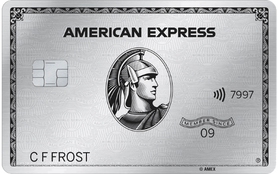
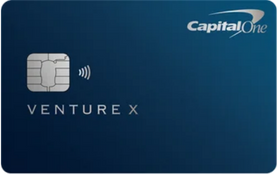

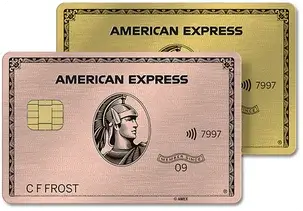



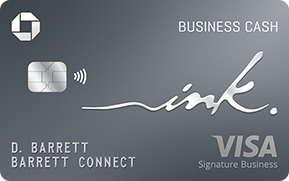
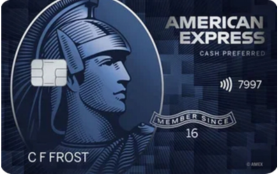



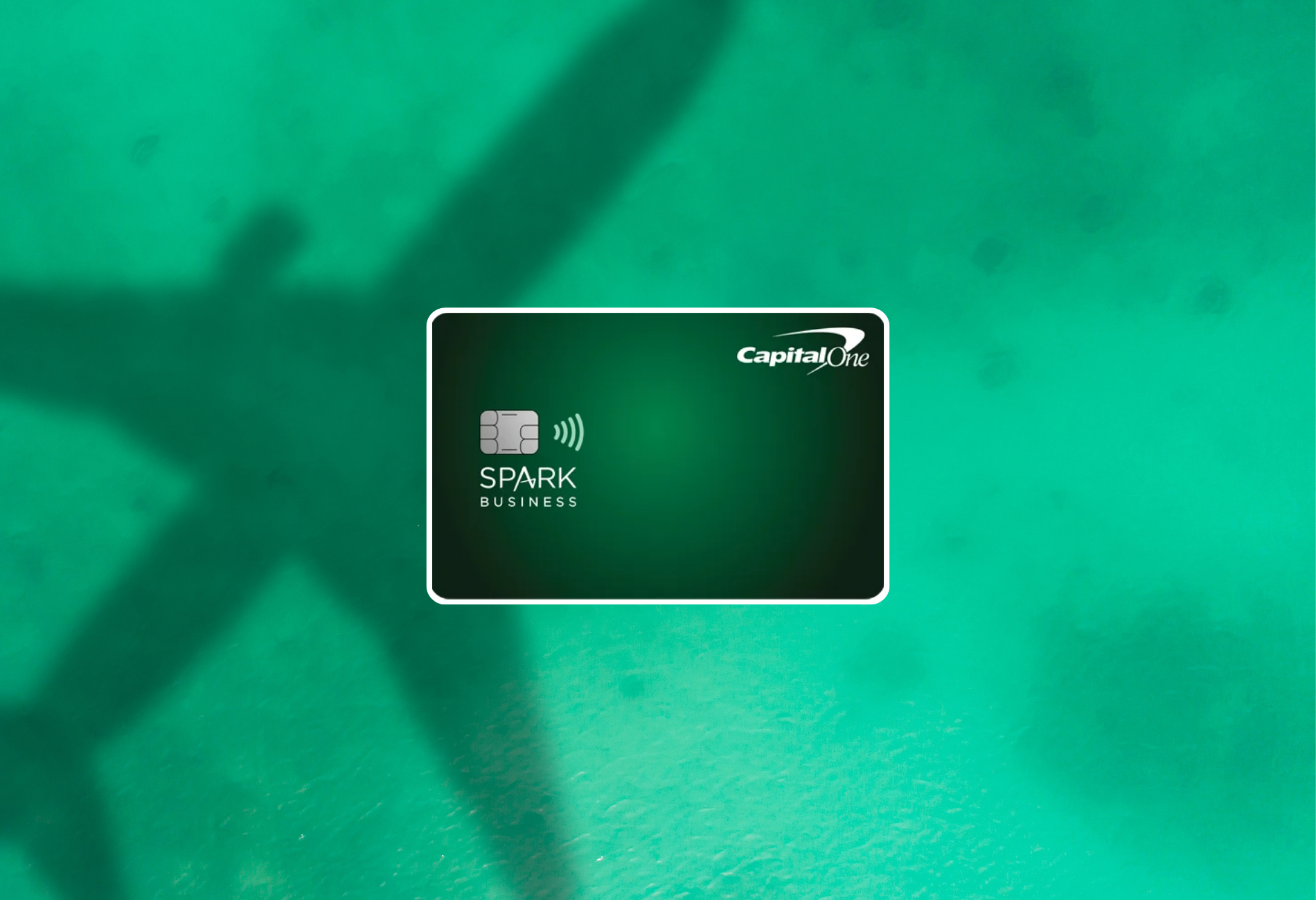

 by your friends at The Daily Navigator
by your friends at The Daily Navigator




